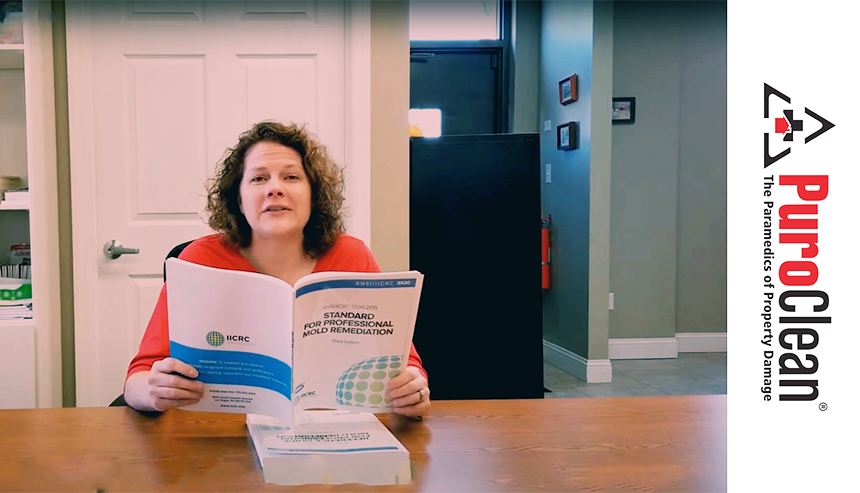In this video, Robin Hoy, co-owner of PuroClean Restoration Services, answers some of the most common questions we hear from homeowners concerned about mold, especially in basements.
If you’re dealing with mold or just want to stay informed, this is definitely worth a watch!
Common Basement Mold Problems
Mold, especially in basements, is the most common concern we hear from customers. Every day, we receive calls about mold in basements, attics, and bathrooms. While some minor cases may be managed with DIY methods, most require professional attention to prevent serious damage and health risks.
Why Do I Have Mold in My Basement?
Three main factors contribute to mold growth in basements: temperature, moisture, and porous materials. Moisture is the only one we can control.
The Three Factors that Lead to Mold
1. Temperature
Mold likes warm temperatures. If your room temperature falls between 68 and 86 degrees, you have the perfect environment for mold growth.
2. Porous Materials
Most homes have them, and they can be a hidden challenge when it comes to mold. Porous materials are items that have tiny holes or spaces that allow moisture to pass through. Our homes are primarily made from wood, so elements such as doors, door frames, and framing are extremely prone to mold growth.
Another common porous material is sheetrock (or drywall)—especially in finished basements. Sheetrock easily absorbs moisture, making it highly susceptible to mold growth after water damage. In basements, where humidity and leaks are more likely, it’s often one of the first materials affected.
3. Moisture
This is the one factor that we CAN control. Think of a basement in the middle of a hot and humid summer- add sheetrock to the mix, and you’ve got the perfect mold storm.
What Can I Do to Prevent Mold in My Basement?
The answer to preventing basement mold is simple: invest in a good dehumidifier. A good quality automatic dehumidifier will turn on by itself when the moisture levels are increasing above a normal level and turn off once the humidity levels are stabilized.
Why Can’t We Control Basement Temperature?
Typically, it’s hard to control basement temperature (especially unfinished basements) because basements are below ground, so they stay naturally cooler and are harder to heat or cool without major HVAC upgrades. Also, basements often lack sunlight and airflow, which limits natural temperature regulation. Installing systems like ductwork or insulation can be expensive and often isn’t practical for many property owners.
What About Mold in My Bathroom?
While bathrooms are mostly constructed from non-porous surfaces, they are still a popular place for mold growth. Think about all those hot, steamy showers you take. That’s why it is so important to run your bathroom vent.
What is the Best Way to Prevent Bathroom Mold?
The best way to prevent bathroom mold is to run your vent WHILE you are showering, then leave it on for about ten minutes after you’ve finished. See our video tips about the maintenance of your bathroom vent.





 PuroClean Restoration Services
PuroClean Restoration Services